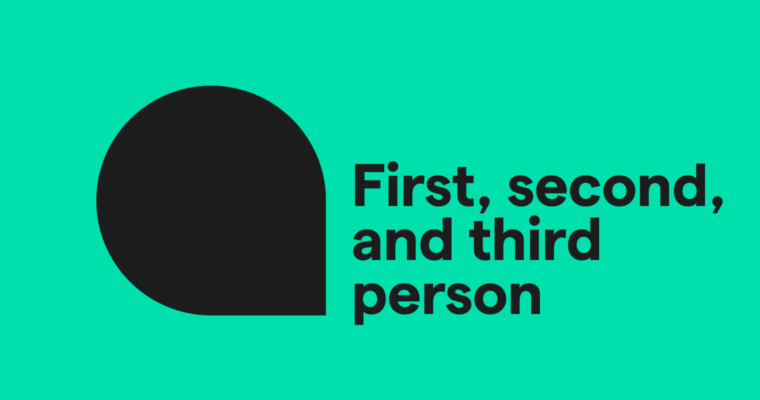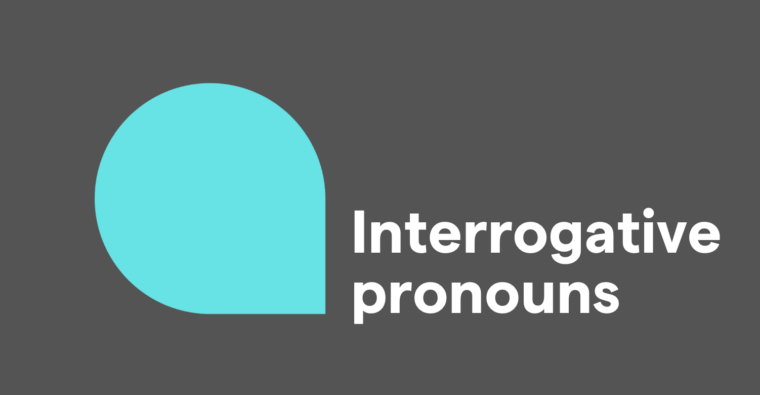
First, second, and third person are ways of describing points of view.
- First person is the I/we perspective.
- Second person is the you perspective.
- Third person is the he/she/it/they perspective.
- Point of view in writing refers to the perspective from which a story or piece of text is discussed.
- Here are some point of view examples: I love my dog (first person); You love my dog (second person); She loves my dog (third person)
It helps to think of first-, second-, and third-person points of view as the perspectives from which a speaker or author voices a sentence. Establishing a clear point of view is essential because it dictates how readers interpret characters, events, ideas, and other important details.
Here are some essential guidelines and examples for understanding point of view.
Table of contents
What do first person, second person, and third person mean?
What is first person point of view?
What is second person point of view?
What is third person point of view?
How do I use point of view correctly in writing?
What do first person, second person, and third person mean?
First person, second person, and third person refer to the different ways of describing point of view. In grammar, the concept of person allows us to tell the difference between the writer or speaker (first person), the person being addressed (second person), and all other subjects, objects, and ideas being discussed (third person).
The term “point of view” in grammar and literature refers to the perspective from which a story or piece of text is narrated. Here’s another way to look at it: Point of view determines whose eyes a story is told through. It can significantly affect how information is presented and how readers interpret and engage with a text.
Different personal pronouns are used to express first, second, and third person (more on those in the following sections).
What is first-person point of view?
In first-person point of view, the speaker refers to themself or a group of people they’re included in. We speak in the first person when we talk about ourselves, our opinions, and what happens to us.
The biggest clue that a sentence is in the first person is using first-person pronouns. Singular first-person pronouns include I, me, my, mine, and myself. Plural first-person pronouns include we, us, our, and ourselves.
First-person point of view provides a personal and subjective experience, allowing readers to see and feel the story directly from the author’s perspective.
First-person point-of-view examples
Here are some examples of first-person point of view:
Many stories, novels, and articles feature a first-person point of view. When reading this type of narrative, it’s as if you are inside a character’s head, watching the story unfold through that character’s eyes.
Is they first-person point of view?
They is not first-person point of view. While they is used as a singular pronoun to represent someone regardless of gender, it is still a third-person point of view, grammatically speaking. First-person pronouns like I and we for subjects, plus me and us for objects, are gender-neutral.
What is second-person point of view?
The second person point of view refers to the person (or people) being addressed. This is the you perspective. The biggest indicator of the second person is the use of second person pronouns: you, your, yours, yourself, yourselves.
In writing, this point of view directly addresses the reader, making them feel as if they are part of the story. It’s also often used in instructional writing.
Second-person point of view examples
Here are some examples of the second-person point of view:
Stories and novels written in the second person exist, but they are much rarer than narratives written from a first- or third-person perspective.
What is third-person point of view?
In third-person point of view, the speaker talks to another person (or people) about someone or something else (the third person or thing).
The third-person point of view belongs to the person (or people) being talked about. The third-person pronouns include he, him, his, himself, she, her, hers, herself, it, its, itself, they, them, their, theirs, and themselves.
When something is written in the third person, it helps to think of the narrative being told by an outside observer, with characters referred to by their names or pronouns like he, she, they, etc.
Third-person point-of-view examples
Here are some examples of the third-person point of view:
Finding point of view without pronouns
It’s important to note that you can’t always rely on pronouns to tell you the perspective of a sentence. Not all sentences include pronouns, especially in the third person.
If you look at this sentence and think, “Mike isn’t me,” you can eliminate the first person. You can also think, “I’m not talking to Mike,” so that eliminates the second person. So, you’re left with the third person.
The third-person narrator
Many stories and novels are in the third person. In this type of story, a disembodied narrator describes what the characters do and what happens to them.
You don’t see directly through a character’s eyes as you do in a first-person narrative, but the narrator often describes the main character’s thoughts and feelings about what’s going on.
Third-person limited, omniscient, and objective
Now that you understand the third-person essentials, let’s further differentiate it into several types: omniscient, limited, and objective.
- Third-person limited: focuses closely on the thoughts, feelings, and experiences of one character but from an outside perspective. Example: Tom watched the sunrise, feeling a mix of hope and sadness, wondering if this new day would bring the change he so desperately needed.
- Third-person omniscient: The narrator knows all the thoughts, actions, and feelings of every character, providing a god-like overview of the story. Example: In the bustling town beneath the quiet mountains, Sally hoped for a promotion, unaware that John, on the other side of town, planned to resign that very day.
- Third-person objective: The narrator reports actions and dialogue without delving into the thoughts or feelings of any characters, offering a detached viewpoint. Example: The cat sat on the windowsill, watching as the rain poured down, while a woman inside sipped her coffee, turning the pages of her book.
Speaking in the third person
Most of the time, when people talk about themselves, they speak in the first person. It would be a bit eccentric to talk about yourself in the third person all the time, but it can be used for comedic effect or to grab someone’s attention.
Tina: Let’s get sushi for lunch. It’s Jeff’s favorite!
Tom: No, Jeff hates sushi. I think he’d rather get burritos.
Jeff: Um, does Jeff get a vote?
How do I use point of view correctly in writing?
An understanding of the different point-of-view options available and how to use each can help you decide which to use in your writing.
Here’s a simple way to remember first-, second-, and third-person points of view:
- First person is the I, we point of view.
- Second person is the you point of view.
- Third person is the he, she, it, they point of view.
Using point of view effectively involves choosing the perspective that best suits the narrative. Remember, each point of view offers a unique way to connect with your readers and present your ideas, characters, and plot.
You don’t have to guess whether you’re using certain words correctly or breaking grammar rules in your writing. Use Grammarly’s Grammar Checker to effortlessly ensure your writing is mistake-free.
Beyond grammar and punctuation, use Grammarly’s AI Writing Tools to elevate your writing to the next level and tailor your text to specific goals.





